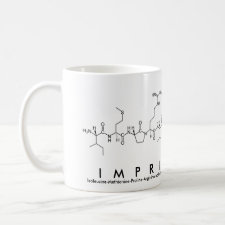
Authors: Wang YT, Zhang ZQ, Jain V, Yi JJ, Mueller S, Sokolov J, Liu ZX, Levon K, Rigas B, Rafailovich MH
Article Title: Potentiometric sensors based on surface molecular imprinting: Detection of cancer biomarkers and viruses.
Publication date: 2010
Journal: Sensors and Actuators B: Chemical
Volume: 146
Issue: (1)
Page numbers: 381-387.
DOI: 10.1016/j.snb.2010.02.032
Alternative URL: http://scholar.harvard.edu/sites/scholar.iq.harvard.edu/files/vjain/files/wangjainrafailovich_sa-b.pdf
Abstract: The continuing discovery of cancer biomarkers necessitates improved methods for their detection. Molecular imprinting using artificial materials provides an alternative to the detection of a wide range of substances. We applied surface molecular imprinting using self-assembled monolayers to design sensing elements for the detection of cancer biomarkers and other proteins. These elements consist of a gold-coated silicon chip onto which hydroxyl-terminated alkanethiol molecules and template biomolecule are co-adsorbed, where the thiol molecules are chemically bound to the metal substrate and self-assembled into highly ordered monolayers, the biomolecules can be removed, creating the foot-print cavities in the monolayer matrix for this kind of template molecules. Re-adsorption of the biomolecules to the sensing chip changes its potential, which can be measured potentiometrically. We applied this method to the detection of carcinoembryonic antigen (CEA) in both solutions of purified CEA and in the culture medium of a CEA-producing human colon cancer cell line. The CEA assay, validated also against a standard immunoassay, was both sensitive (detection range 2.5-250 ng/mL) and specific (no cross-reactivity with hemoglobin; no response by a non-imprinted sensor). Similar results were obtained for human amylase. In addition, we detected virions of poliovirus in a specific manner (no cross-reactivity to adenovirus, no response by a non-imprinted sensor). Our findings demonstrate the application of the principles of molecular imprinting to the development of a new method for the detection of protein cancer biomarkers and to protein-based macromolecular structures such as the capsid of a virion. This approach has the potential of generating a general assay methodology that could be highly sensitive, specific, simple and likely inexpensive
Template and target information: carcinoembryonic antigen, CEA
Author keywords: biosensor, self-assembled monolayer, molecular imprinting, protein recognition, Cancer marker, potentiometric sensor



Join the Society for Molecular Imprinting

New items RSS feed
Sign-up for e-mail updates:
Choose between receiving an occasional newsletter or more frequent e-mail alerts.
Click here to go to the sign-up page.
Is your name elemental or peptidic? Enter your name and find out by clicking either of the buttons below!
Other products you may like:
 MIPdatabase
MIPdatabase









